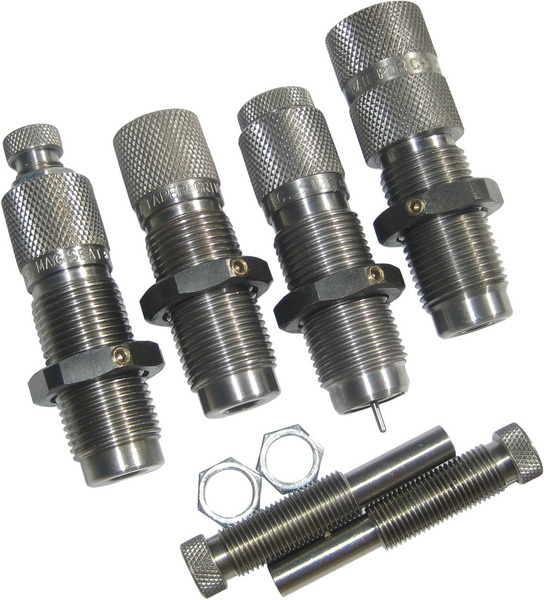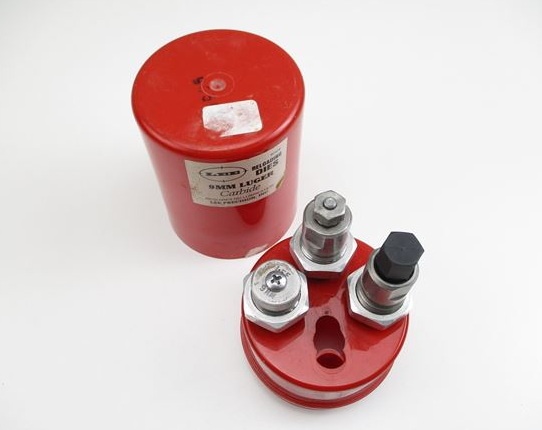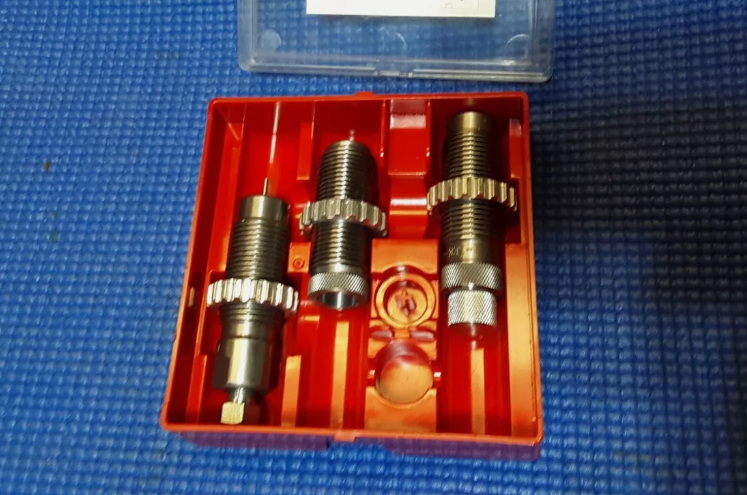Content Menu
● Introduction
● Understanding Reloading Dies
● Benefits of Using 9mm Luger Carbide Reloading Dies
● Top Brands and Models of 9mm Luger Carbide Reloading Dies
● How to Choose the Right Reloading Die Set
● Step-by-Step Guide to Reloading with 9mm Luger Carbide Dies
● Conclusion
● Frequently Asked Questions
>> Q1. What is the difference between carbide and steel reloading dies?
>> Q2. Can I use 9mm Luger carbide dies for other calibers?
>> Q3. How often should I clean my reloading dies?
>> Q4. Are there any safety tips I should follow while reloading?
>> Q5. What is the best way to store my reloading dies?
Introduction
Reloading ammunition has become an increasingly popular hobby among shooting enthusiasts, offering both cost savings and the ability to customize loads for specific needs. Among the various calibers, the 9mm Luger stands out as one of the most widely used, particularly for handguns. To achieve the best results in reloading, having the right tools is essential, and this is where 9mm Luger carbide reloading dies come into play. These specialized tools not only enhance the reloading process but also ensure precision and consistency in the ammunition produced.
Understanding Reloading Dies
Reloading dies are essential components in the ammunition reloading process. They are metal tools that shape and resize the cartridge cases, seat bullets, and crimp the finished rounds. The use of carbide dies, particularly for the 9mm Luger, offers several advantages over traditional steel dies. Carbide is a harder material that provides a smoother surface, reducing friction during the resizing process. This results in less wear on both the dies and the reloading press, ultimately leading to a more efficient reloading experience.

Benefits of Using 9mm Luger Carbide Reloading Dies
Using 9mm Luger carbide reloading dies comes with numerous benefits that can significantly improve the reloading process:
- Enhanced Accuracy and Consistency: Carbide dies are known for their precision. They maintain tight tolerances, which is crucial for producing ammunition that performs consistently. This is especially important for competitive shooters who rely on accuracy.
- Reduced Friction and Wear: The smooth surface of carbide dies minimizes friction, making it easier to resize cases. This not only speeds up the reloading process but also extends the lifespan of both the dies and the reloading press.
- Cost-Effectiveness: While carbide dies may have a higher initial cost compared to steel dies, their durability and efficiency can lead to long-term savings. Reloaders can produce high-quality ammunition at a fraction of the cost of factory-loaded rounds.
Top Brands and Models of 9mm Luger Carbide Reloading Dies
When it comes to choosing the best 9mm Luger carbide reloading dies, several brands stand out in the market. Each brand offers unique features and benefits, making it essential for reloaders to consider their specific needs.
- Lee Precision: Known for its affordability and reliability, Lee offers a variety of 9mm Luger carbide die sets. Their dies are user-friendly, making them an excellent choice for beginners. The Lee 9mm Luger Carbide 3-Die Set includes a sizing die, a bullet seating die, and a factory crimp die, providing everything needed for a complete reloading setup.
- RCBS: Renowned for its high-quality reloading equipment, RCBS produces carbide dies that are built to last. The RCBS 9mm Luger Carbide Die Set features precision machining and a lifetime warranty, ensuring that reloaders can trust their equipment for years to come.
- Redding: Redding is another respected name in the reloading community, offering premium carbide dies. Their 9mm Luger die set is designed for precision and includes a full-length sizing die, a bullet seating die, and a taper crimp die, catering to the needs of serious reloaders.
- Hornady: Hornady's 9mm Luger carbide dies are known for their innovative design and ease of use. The Hornady Custom Grade New Dimension Die Set includes a unique seating die that allows for precise bullet seating depth adjustments, making it ideal for reloaders who want to fine-tune their loads.
- ZHONGBO CEMENTED CARBIDE: ZHONGBO CEMENTED CARBIDE offers a range of reloading dies, including carbide options for the 9mm Luger. Their dies are designed for versatility and can accommodate a variety of bullet types and weights, making them suitable for different shooting applications.
How to Choose the Right Reloading Die Set
Selecting the right reloading die set is crucial for achieving the best results. Here are some factors to consider when making your choice:
- Type of Reloading Press: Ensure that the die set you choose is compatible with your reloading press. Some presses may require specific die designs or configurations.
- Shooting Needs: Consider your shooting style and the type of ammunition you plan to reload. If you are a competitive shooter, you may want a die set that offers more precision and customization options.
- Budget: While it's tempting to go for the cheapest option, investing in high-quality carbide dies can save you money in the long run. Look for a balance between quality and affordability.
- Beginner vs. Experienced Reloaders: Beginners may benefit from user-friendly die sets that come with clear instructions, while experienced reloaders might prefer more advanced options that allow for greater customization.

Step-by-Step Guide to Reloading with 9mm Luger Carbide Dies
Reloading with 9mm Luger carbide dies can be a straightforward process if you follow these steps:
1. Gather Your Equipment: Ensure you have all necessary equipment, including your reloading press, 9mm Luger carbide dies, shell holder, powder measure, and components (brass cases, bullets, and primers).
2. Set Up Your Reloading Press: Install the carbide sizing die in your reloading press. Adjust the die according to the manufacturer's instructions to ensure proper sizing of the brass cases.
3. Resize the Brass Cases: Insert a fired brass case into the shell holder and raise the ram to resize the case. This step removes any deformation from firing and prepares the case for reloading.
4. Prime the Cases: After resizing, remove the case and insert a primer into the primer pocket. This can be done using a hand primer or the priming feature of your reloading press.
5. Measure and Add Powder: Use a powder measure to dispense the appropriate amount of powder into each case. Ensure you are using a powder that is suitable for 9mm Luger loads.
6. Seat the Bullets: Install the bullet seating die in your press. Place a bullet on top of the charged case and raise the ram to seat the bullet to the desired depth. Adjust the die as needed for precise seating.
7. Crimp the Rounds: Finally, use the crimping die to apply a slight crimp to the case mouth. This step ensures that the bullet is securely held in place and prevents setback during feeding.
8. Inspect Your Finished Rounds: After reloading, inspect each round for consistency and quality. Look for any signs of defects, such as uneven bullet seating or excessive crimping.
Conclusion
In conclusion, using 9mm Luger carbide reloading dies is an excellent choice for anyone looking to enhance their reloading experience. The benefits of precision, durability, and cost-effectiveness make these dies a valuable investment for both novice and experienced reloaders. By selecting the right die set and following proper reloading procedures, you can produce high-quality ammunition that meets your specific shooting needs. Whether you are a competitive shooter or a recreational enthusiast, investing in quality reloading dies will undoubtedly improve your shooting experience.

Frequently Asked Questions
Q1. What is the difference between carbide and steel reloading dies?
Carbide dies are made from a harder material that provides a smoother surface, reducing friction and wear. They are more durable and require less lubrication compared to steel dies, making them ideal for high-volume reloading.
Q2. Can I use 9mm Luger carbide dies for other calibers?
No, 9mm Luger carbide dies are specifically designed for 9mm Luger cartridges. Using them for other calibers may result in improper sizing and bullet seating.
Q3. How often should I clean my reloading dies?
It is recommended to clean your reloading dies after every few hundred rounds or whenever you notice residue buildup. Regular cleaning helps maintain their performance and longevity.
Q4. Are there any safety tips I should follow while reloading?
Always wear safety glasses, work in a well-ventilated area, and follow the manufacturer's instructions for your reloading equipment. Additionally, double-check powder measurements and inspect finished rounds for defects.
Q5. What is the best way to store my reloading dies?
Store your reloading dies in a cool, dry place, preferably in their original packaging or a dedicated storage case. This helps protect them from moisture and damage, ensuring they remain in good condition for future use.
















